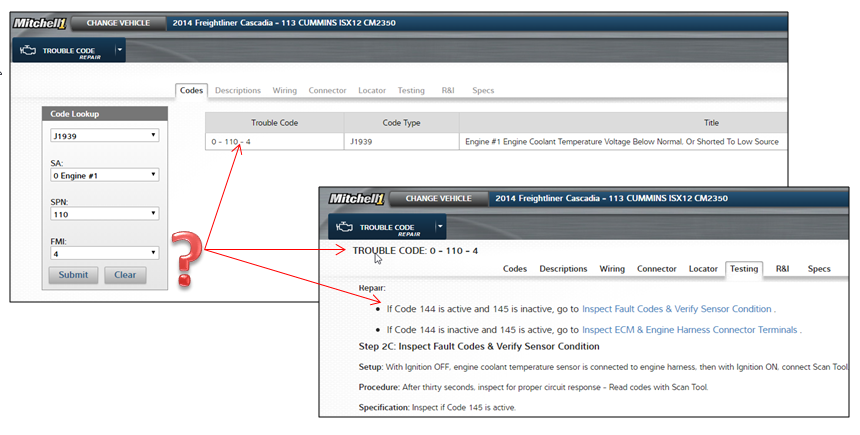Code Name Differences
Have you ever been working through a testing procedure for a fault code and found a reference to another code that doesn’t look anything like the code you entered? Take a look at this example:

So, what in the world is going on here? Well, the answer is actually fairly simple. It goes like this:
When the diagnostic procedure gets written and the codes mentioned in the text are put in by the editor, the editor selects a specific code type, like J1939, J1587, OBD II, or OEM, and it will also depend on what the control module of the vehicle transmits.
Here is the really interesting part; some component controllers will transmit all of the code type or a number of them. The editor, of course, has no idea which code type the technician will be able to retrieve. Thus, the drop-down menu in the Trouble Code Repair module will have whatever code types are available.

Now, what may not be realized is that the testing is the same for the different code types for that particular problem. For example, Code 145, shown in the text, is the same as the J1939 code selected:

So why should you care? Well, let’s say the J1939, code 01-110-4 is read from the scan tool and you enter the code only to find that you have gotten to testing and found other numbers listed that make no sense. Now, you know they are very likely just another code type. Thus, the 144 or 145 can be navigated to by using the OEM drop-down menu.
Hope this helps to shed a little light on what can be a bit confusing.

